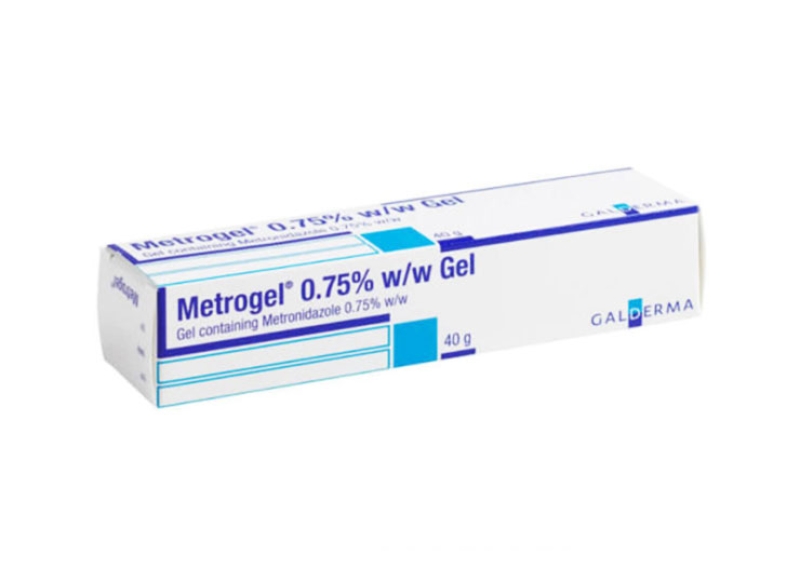Rozex cream is a topical medication that is available on prescription and is used for the treatment of pustules and inflammatory papules of skin disease called ‘Rosacea.’ Rozex cream contains the active ingredient known as ‘Metronidazole.’ This is a drug that belongs to the classification of medicines as antibacterials.
The cream is used to help reduce the cystic action of the skin condition and help reduce flushing and redness, as well as help fight itching and other related problems associated with the skin condition. It is unclear specifically how this drug works, but it is found effective in curing the condition with its antibacterial and anti-inflammatory action to the skin.
It often takes 2-3 months of consistent use of Rozex cream that the skin starts to clear up and reduce the redness. Even if you’re not seeing results after several weeks, it is recommended that you finish the prescribed treatment. Treatment with Rozex Gel doesn’t normally go on longer than four months
The dosage of Rozex cream is at 0.75% of cream Metronidazole. Rozex cream is for external use and must be applied in the skin of the face only. Use the cream twice a day (morning and night). Avoid getting the Rozex cream on your eye, mouth, nose, or other mucous membrane areas. If you do, carefully and immediately wash the area with warm water.
Follow the instructions below to ensure appropriate use of this medication:
- Wash the affected area of your face gently with warm water and mild soap and then pat dry with a towel.
- Squeeze roughly an inch of gel onto your fingertip and apply the cream on the affected area.
- Rub the cream and spread evenly across your whole face.
- Wash your hands thoroughly after every use and replace the cap on the tube of gel.
Do not expose the treated area of the skin to direct sunlight as it can make the treatment ineffective. If you experience any skin irritation, stop using Rozex cream for a few days and resume use after the symptoms have gone.
Always use this medication exactly as your clinician has told you. Check with our clinical team or your GP or pharmacist if you are not sure.
Medicines and their possible side effects can affect individual people in different ways. The following are some of the side effects that are known to be associated with this medicine. Just because a side effect is stated here, it does not mean that all people using this medicine will experience that or any side effect.
The most common side effects of Rozex cream includes:
- Severe itching of the skin
- Worsening of rosacea
- Dry skin
- Superficial reddening of the skin
- Skin discomfort
- Skin burning, dryness
- Pain of skin or stinging)
- Skin irritation
- Hyperpigmentation and other pigmentation disorders
These are the more common side effects of the topical Rozex cream. Other Rozex cream side effects not listed above may occur in some patients. Do inform your GP or pharmacist if you notice any side effects not mentioned in this article.
Inform your doctor or pharmacist, if you experience any of the following rare side effects:
- Skin infection
- Hives
- Dysgeusia (metallic taste)
- Contact dermatitis
- Skin exfoliation
- Swelling face
- Nausea
- Excess watery fluid collection on the eyelids or facial area
- Reduced sense of touch or sensation
- Tingling or pricking sensation
- Numbness in the extremities
- Seborrhea
- Sunburn
- Gastritis
- Bronchitis
- Stuffy runny nose
For full information on side effects and correct use, see the patient information leaflet. If any side effects concern you, or you are experiencing any of the side effects mentioned in the patient information leaflet whilst taking this medication, please contact our clinical team or speak to your GP.
Do not use Rozex if you are allergic to metronidazole or any of the other listed ingredients. An allergic reaction to Rozex may produce a rash or itching. Do not use Rozex while pregnant or breastfeeding unless a doctor says it’s essential.
Before using Rozex, talk to a doctor or pharmacist, and take the following precautions:
- If you suffer from any blood disorders, be sure to get confirmation from your doctor that Rozex is safe for you before you use it.
- Avoid strong sunlight (including sunbathing) and exposure to ultraviolet light (eg. solariums, sun lamps) while you are using Rozex.
- Because metronidazole can react with alcohol (and contains cetostearyl alcohol), it is advised that you avoid alcohol while using Rozex gel.
Get emergency medical help if you have signs of an allergic reaction to this medication. These include:
- Hives
- Dizziness
- Fast or pounding heartbeats
- Wheezing
- Difficult breathing
- Swelling of your face, lips, tongue, or throat.
It is important that you let us know which prescription, over-the-counter medicines and recreational drugs you are currently taking. You must also tell us about any other medical conditions that you currently have (or had in the past). This will help us ensure the prescribed medication is safe and appropriate for you to take.
For full information on warnings, medication interactions and contraindications, refer to the Patient Information Leaflet. Please read all packaging and the Patient Information Leaflet before taking any new medicine and inform our clinical team or your GP of medicines you are taking or intend to take.







